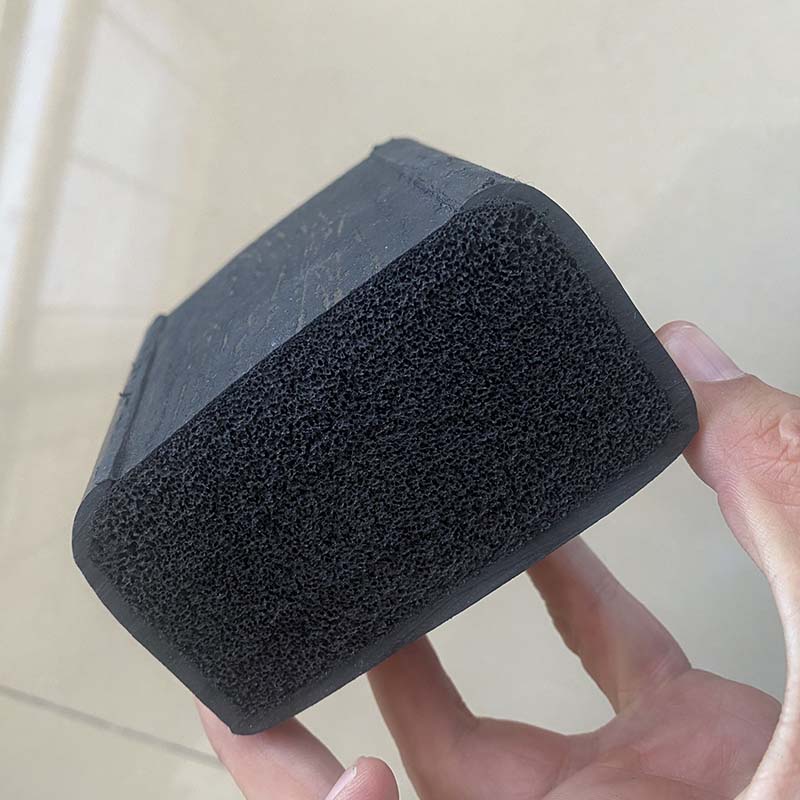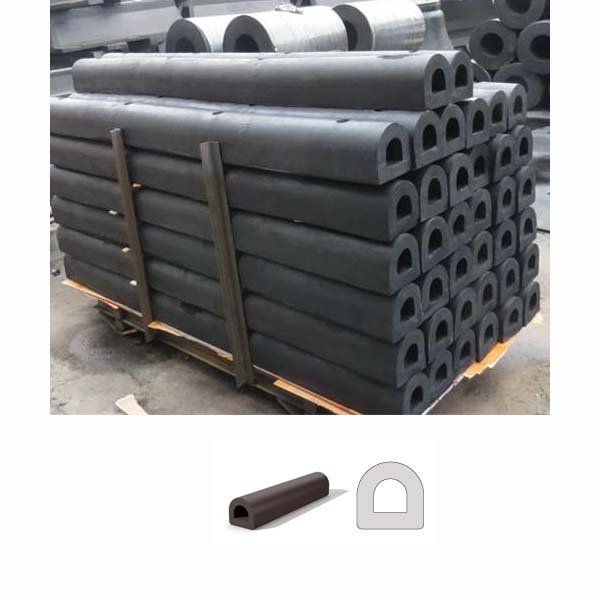Marine conditions are extremely severe. Boats, ships, and other vessels are constantly exposed to seawater and sunshine. Marine rubber is one of the most important materials utilized on these vessels. If the rubber is incompatible with the aquatic environment, it may disintegrate quickly. Thus, choosing the right maritime rubber is indispensable.
Rubber on vessels can be used for many applications. Marine rubber, for example, can be used for sealing or insulation. Its main purpose is to protect and provide cushioning during docking or moving on the water. A wrong choice of maritime rubber cannot guarantee long-lasting services. It may also pose many safety risks. Therefore, making the correct choice is critical.
What is marine rubber, though? What can you do to make sure you pick the right type for your needs? This article will talk about maritime rubber, including the different kinds, how they work, and what you should think about when choosing one.

What is Marine Rubber?
Marine rubber is any rubber material suitable for the aquatic environment. Understanding different marine conditions is equally necessary to understanding different coastal rubbers.
A marine environment can be oceans, seas, or coastal areas. The water can be either salty or sweet. The environment might be harsh in different situations. For example, sea or ocean water is extremely salty and corrosive. Besides, all marine situations often face threats like saltwater damage and barnacle growth. Wave impact is a common case in oceans and seas.
Moreover, during docking, vessels often face abrasions and impact with docks or piers. Mooring line stress is also critical here.
To avoid these circumstances, choose robust materials when building vessels. Marine rubber is a critical component in this scenario. Marine rubber has a basic purpose: protection. It can be used to seal and absorb collisions. Maritime rubber primarily ensures that your vessel remains operational even in difficult scenarios.
Characteristics of a Marine Rubber
Knowing the characteristics of marine rubber is essential when choosing the right one. When you have ideas about it, you can quickly decide between different coastal rubbers. Below, for your reference, are some of the key properties when choosing a marine rubber.
(1) The first feature to look for in marine rubber is its water resistance. As you are aware, your vessel will always be on the water, so the water absorption rate is an important consideration.
(2) Since Marine vessels are usually exposed to the outdoor environment, they must be resistant to UV radiation. However, for indoor applications, you might use rubber that is not very UV-stabilized.
(3) Another aspect to consider here is saltwater resistance. Sea water is usually aggressive to all types of rubber products. Since its action is corrosive, rubber products’ deterioration is accelerated. Therefore, marine rubber must be saltwater resistant.
(4) You must also look for flexibility in maritime rubber. This becomes a prime concern when it comes to docking or mooring. At this time, the vessel you are sailing may hit other boats or the dock unexpectedly. Marine rubber must be flexible enough to absorb this impact.
(5) Marine ships encounter rocks or sand when colliding with docks. Therefore, maritime rubber must be abrasion-resistant.
(6) Oil-contaminated water is present in some marine areas, such as those surrounding fuel lines or machinery. In this situation, marine rubber must be oil-resistant. Besides, different hoses and seals used on marine vessels may often encounter oil substances.
(7) The ocean water may be as cold as -2 degrees to 56 degrees Celsius. You must choose a rubber that can smoothly work around this temperature range.
Best Marine Rubber Used in Aquatic Applications
The right rubber plays a critical role in aquatic environments. Out there, you will find a wide range of synthetic rubber. Choosing between these vast options could be challenging. Let’s make this easier for you.
NBR, Silicone, and EPDM rubber are three of the most noticeable options for marine applications. They’re all good at different things. Before choosing which one to use, you should think about the use and the surroundings.
Nitrile rubber, or NBR, is one of the most popular rubber used in marine applications. It is mostly popular for resisting oils and fuels. Most fuel hoses and seals in vessels are made of NBR rubber. However, when it comes to UV resistance, NBR lacks a few advantages. So, you can only use it where there is limited UV exposure.
Silicone is a generic term for any applications that involve severe temperatures. One of the best features of this rubber is its stability. It can maintain flexibility in both hot and cold situations. Most seals and gaskets that face wide temperature variations can be made of silicone rubber. Also, silicone rubber is highly resistant to UV light, so you can also use it outdoors.
EPDM, or Ethylene Propylene Diene Monomer, is known for its superior UV resistance and excellent resistance to saltwater corrosion. These two features specifically make EPDM rubber ideal for marine weather stripping. EPDM is a great all-around marine rubber.
Application of Marine Rubber
Marine rubber is a versatile material. It can be used in many places on a vessel. Marine rubbers are widely used for different purposes. Let’s look at some common uses.
Hull Fittings
The hull is a vessel’s body. It is generally watertight, and hull fittings play a crucial role in creating watertight seals for openings. Openings can be of various types: windows, hatches, or doors. A good seal ensures that the boat remains watertight, even in rough seas.
Plumbing System
Rubber is also widely used in marine plumbing systems. Many hoses and seals in the piping system are mostly made of maritime rubber. Since marine plumbing is exposed to both saltwater and freshwater, rubber can be the ideal option. Nitrile, neoprene, and EPDM rubber are common choices for this application.

Marine Rubber Seal
A marine rubber seal is also known as marine weather stripping. Rubber is the go-to material for sealing, whether it’s for the engine room, fuel tanks, or windows. Rubber weather stripping is an ideal option. Its main job is to keep out water, air, and dust, ensuring the vessel’s components are protected from the external environment.
Insulation
Marine rubber is also widely used in insulation works. It is often used around wiring and electrical systems. Since salt water is a good conductor of electricity, the wiring in your boat must be well-protected. In such situations, maritime rubber is prevalent.

Bumpers and Trim
Marine rubbers are also widely used for bumpers and trim around the edges of boats. These are the most visible applications of marine rubber. Marine fenders typically absorb impacts and prevent damage when docking. Besides, it also protects your boat from scratches during close contact.
How to Choose the Right Marine Rubber
Marine rubbers are widely used in many applications on ports and vessels. Each application needs different marine rubber. But how do you know which rubber type is the best? Although you have already covered the core concept of this article, this section will organize the process of selecting the right material.

The Purpose of Rubber Gaskets
Maritime rubber has many applications, including sealing, insulation, bumpers, and fenders. For example, rubber gaskets seal connections. Rubber trims or marine weatherstripping keep water from leaking. Bumpers and fenders prevent vessels from damage while docking or in severe seas.
Each purpose needs a specific type of rubber. Therefore, before selecting marine rubber, always consider its intended use. What will it be protecting? How much wear and tear will it endure?
Materials to Consider
Once you know the purpose, it’s time to choose the material. Not all rubber is created equal. Different rubbers perform better in specific situations. For example, NBR rubber is perfect when you need oil or fuel resistance.
EPDM rubber is superb at withstanding weather and UV light, but silicone rubber is better when temperatures are very high or very low. Natural rubber is often preferred for marine fenders, which are usually made of natural rubber with a certain amount of SBR.
Rubber Gasket Design
Once you have decided on the material, consider the type and design of the marine rubber. It’s not enough to pick the right material; it also needs to fit your vessel properly. Is the gasket shape compatible with your boat’s fittings? Can it provide a tight, durable seal? Even the best material won’t work well if the design isn’t right for your specific needs. Always ensure the gasket matches the vessel’s specifications and installation process.
Choosing the right Rubber Marine Fenders
A marine fender is an important piece of gear for a boat. It keeps your boat safe from heavy hits. Marine fenders that aren’t made well could put your boat at risk. So, picking the right boat fenders is very important.
Factor #1. Consider the vessel’s dimension. A larger boat needs thicker and stronger marine fenders because it produces more impact. On the other hand, smaller vessels produce less impact, so a thinner and less strong fender is OK.
Factor #2. Consider the type of the port. Is it a busy or industrial port? Consider the amount of wear and tear the marine fenders will experience.
Factor #3. Think about the type of marine surroundings. Are the fenders going to be in salt water or fresh water? The material you pick should be able to handle these situations.
Factor #4. consider how the fenders will be used during docking. Will the crew have proper guidance while berthing?
Get in Touch with Us!
For all types of marine rubber products, stay connected with the seashore rubber factory. You are always welcome to our customer support portal.
